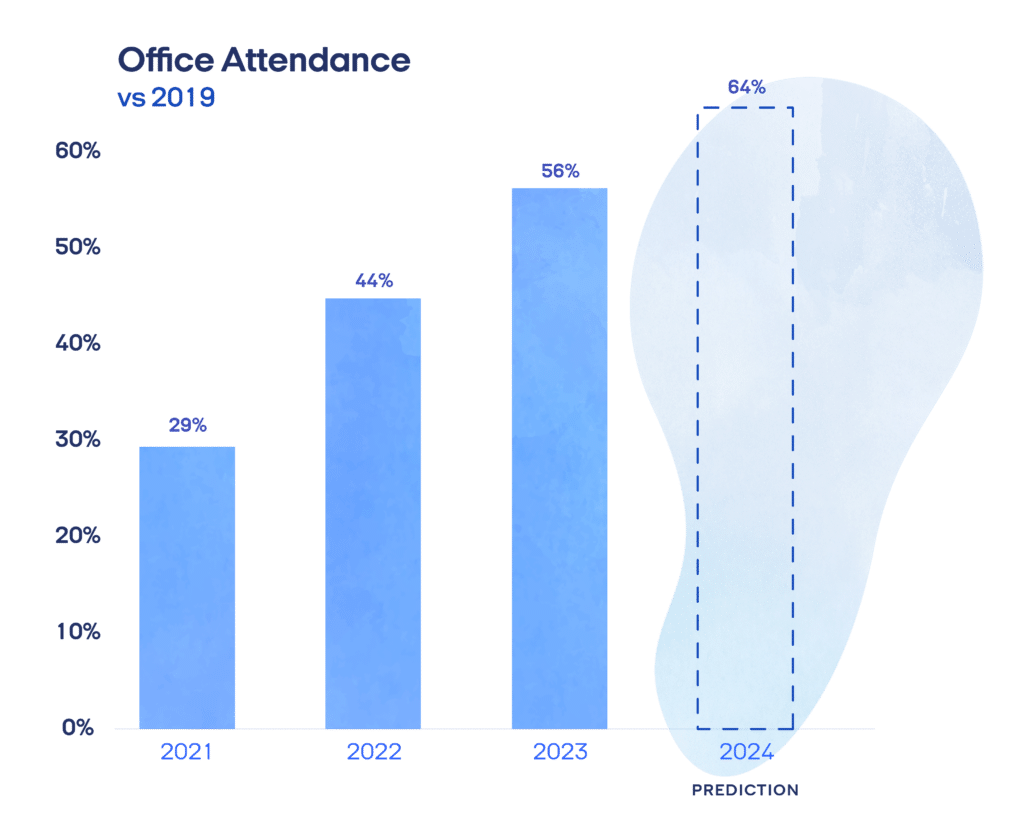Work has changed a lot since the pandemic, but between the headlines and executive statements, it’s hard to grasp the true extent of the shift. What will office attendance look like by the end of this year? How many employees will actually return to the office?
It turns out there’s a handy indicator for how much time employees spend in the office: how much water they drink at work. We dug into the data from our nationwide network of internet-connected water coolers, which are spread across thousands of small- to medium-sized businesses and 30% of the Fortune 1000, to understand how return to office is actually going.
How we analyze office attendance
Let’s start by defining how we compare pre- and post-pandemic office attendance. We assume that on average, individuals consume the same amount of water per year from 2019 to 2023. In other words, we assume that the amount of water they drink in the office is an accurate reflection of the time they spent in the office.
Fluctuation in the use of Bevi machines, therefore, serves as a proxy for fluctuation in office attendance. We compare each month in a given post-pandemic year—2021, 2022, and 2023—to the same month in 2019 (since water consumption isn’t consistent month to month). Through these comparisons, we can see how far office attendance is behind—or ahead, in the surprising case of some major metropolitan areas—pre-pandemic levels for any given month.
And an important legal note! We only examine and report on aggregate data, grouped by industry, region, or company size. We never share individual company data. Bevi does not sell usage data.
So… what did we find?
1. We’re returning to the office whether we like it or not
In April of 2020, office attendance across industries and cities plummeted to 6% of what was seen the previous year. Since this rapid swing to remote-first work, office attendance has steadily recovered, reaching 24% of its pre-pandemic level by the end of 2021, 49% by the end of 2022, and 56% by the end of 2023. Some experts argued that office attendance at 50% would be the new normal, but our data shows that we’re already above that—and continuing to trend upward.

2. San Francisco is last in return to office (but it’s not as far behind as you think)
From our analysis of nine major U.S. cities, San Francisco trails in post-pandemic office attendance, reaching only 43% of pre-pandemic levels in 2023. The area once known for a bustling tech scene and booming real estate market has seen an exodus of companies and a tumble in commercial building valuations, while a third of its residents work totally remote jobs—the highest rate among all U.S. cities.
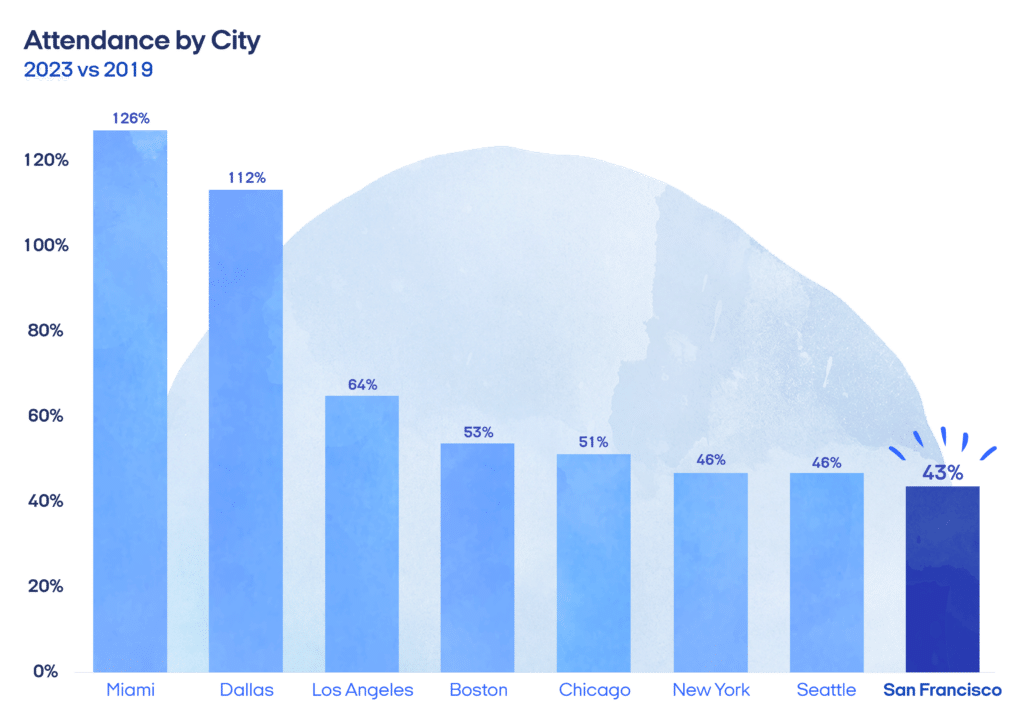
3. Dallas and Miami led the charge back to office life
In contrast to their northeastern and western counterparts, southern metropolitan areas, especially those within Florida and Texas, prioritized an “open for business” approach much earlier—and it shows in their office attendance numbers. Dallas saw its in-office attendance surpass pre-pandemic levels by 12 percentage points in 2023, ranking second nationally behind Miami, which saw a 26 point surge.

4. Days in the office are fewer, but longer
Whereas office attendance was more evenly dispersed across the five-day work week before the pandemic, the time employees spent in the office last year condensed around two days in particular: Tuesday and Wednesday.
And a greater portion of in-office hours now take place before 9AM and after 5PM than before the pandemic. This could be a strategy to avoid the commute, and it’s possible people are falling into two camps: starting earlier in order to leave earlier, or coming in later and leaving later. One thing is clear: fewer people are working the traditional eight hours.
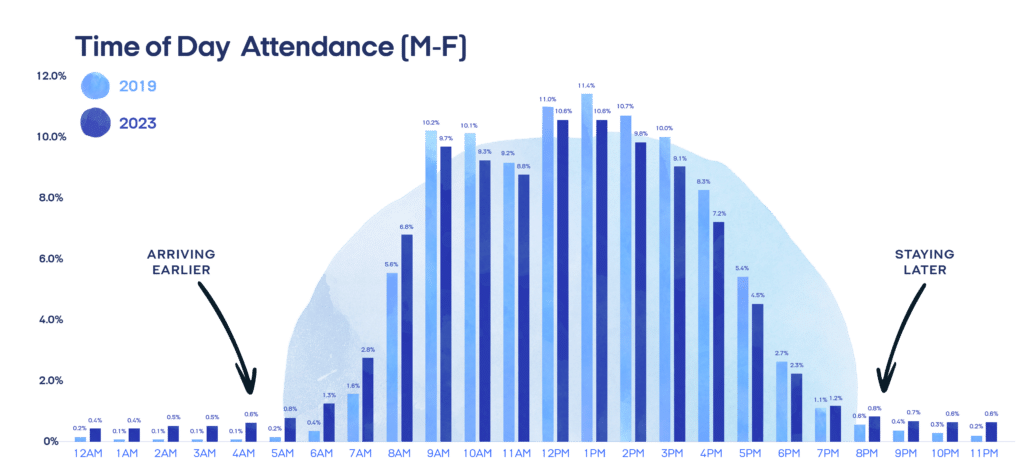
5. Wall Street is still intense, but not like old times
Finance companies saw their New York City office attendance surpass the national average this year—a benchmark they also outpaced before the pandemic. For major financial institutions in The Big Apple, return-to-office mandates have been strict, with major players such as JPMorgan Chase, Goldman Sachs, and BlackRock giving ultimatums to their employees to return.
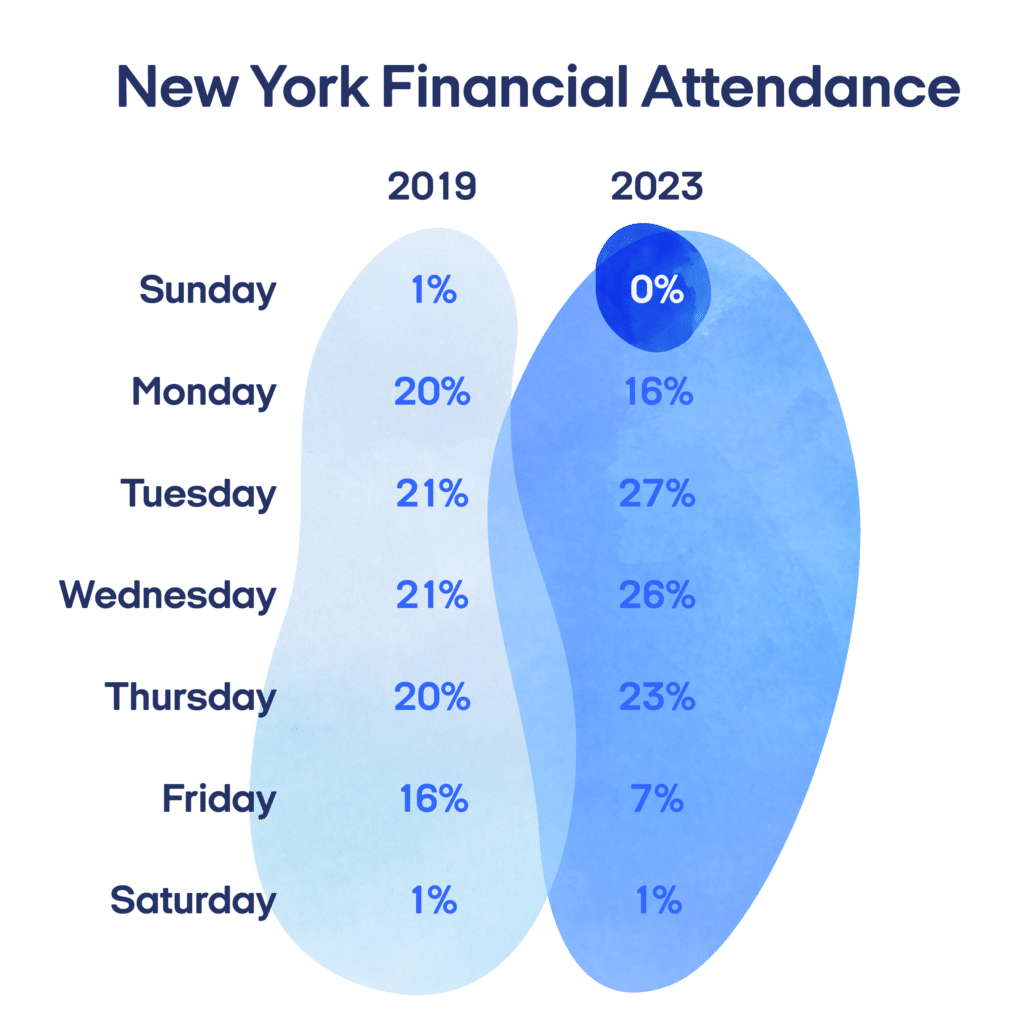
6. Tech saw the biggest jump in 2023
The tech sector is in last place of all industries in terms of return-to-office, with only 46% of pre-pandemic attendance levels in 2023. But the picture is getting brighter: tech has seen a marked surge from 31% in 2020. Denver, which has been a growing hub for tech talent in recent years, really shot up; the fact that its wage growth is outpacing rent has helped the Mile High City attract young, educated, tech-savvy workers to relocate.
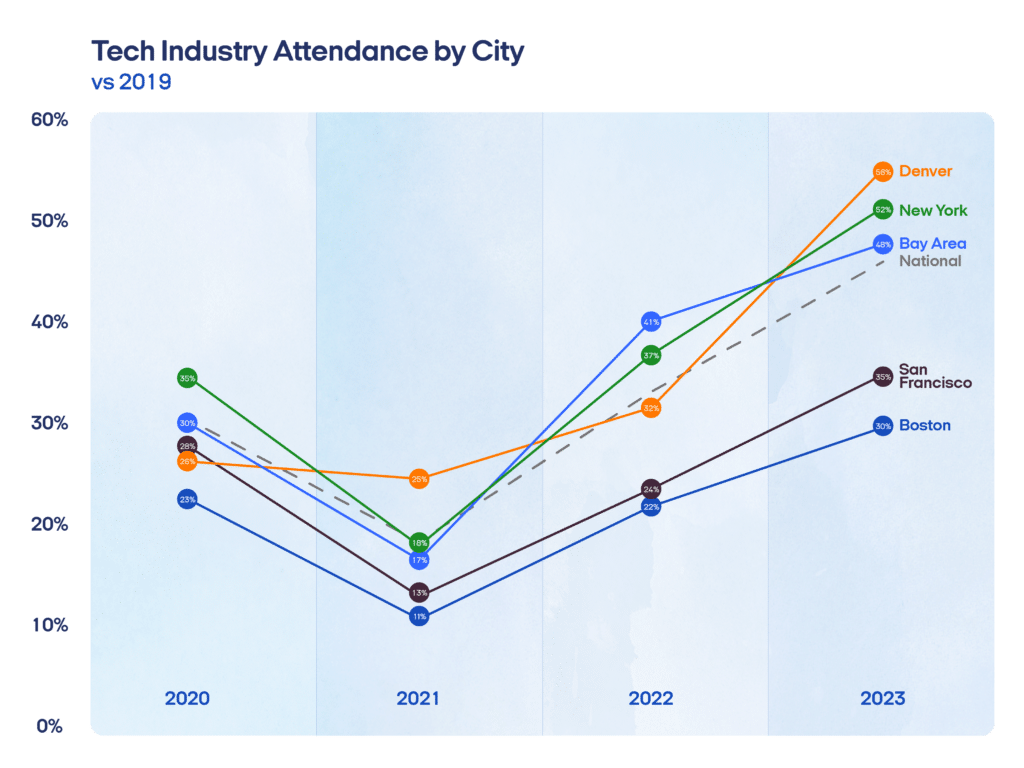
7. Mid-sized companies allow for the most remote work
Across industries, mid-sized companies are seeing the lowest in-office attendance, and most flexible working arrangements from their employees. This could be because mid-sized companies exist in a sweet spot between startup “hustle culture” and big company bureaucracy.

Predictions for 2024—and beyond
Nationally, year-over-year workplace attendance will gradually increase to 62 to 64% in 2024. Companies will continue to offer flexibility, but will promote RTO to ensure that people in different departments stay connected to each other and that new people are learning.
The vague term “hybrid” will break into more specific definitions as companies figure out what works for them. More companies will label themselves either “remote first” or “office first.” These labels will serve as beacons to attract like-minded employees. Recent college grads will primarily seek “office first” jobs in an effort to absorb more knowledge and jumpstart their careers.
Long-term, the threat of being displaced by lower-cost alternatives—from workers in countries with lower GDP to AI bots interfacing with ChatGPT—will lead to more in-person attendance. Personal relationships will become an important differentiator in getting work done more effectively than AI, or than a fellow human on the other side of the world, could. This will prompt people to dust off their soft skills and their business socks and prioritize working together in person again!
